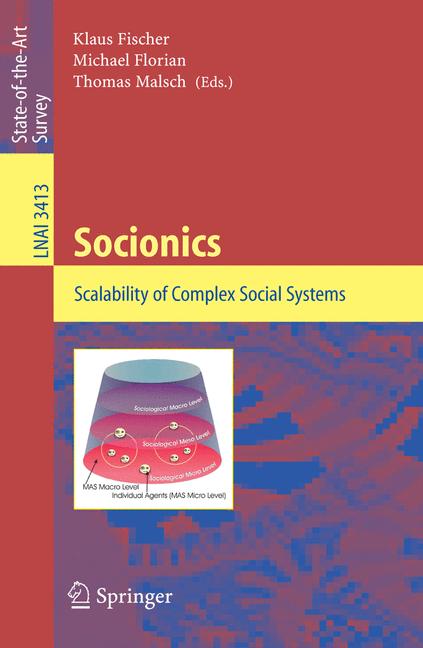
Zustellung: Di, 31.12. - Sa, 04.01.25
Versand in 3 Tagen
VersandkostenfreiBestellen & in Filiale abholen:
1 Thisbookis an outcomeof the SocionicsResearch Framework. Therootsof Socionics lie in the 1980s when computer scientists in search of new methods and techniques of distributed and coordinated problem-solving ?rst began to take an engineering interest in sociological concepts and theories. Just as biological phenomenaare conceived of as a source of inspiration for new technologies in the new research ?eld of bionics, c- puter scientists working in Distributed Arti?cial Intelligence (DAI) became interested in exploiting phenomena from the social world in order to construct Multiagent S- tems (MAS) and, generally, to build open agent societies or complex arti?cial social systems. Socionics is driven by the underlying assumption that there is an inherent parallel betweenthe up-scaling ofMASandthe micro-macrolink insociology. Accordingly, one of the fundamental challenges of Socionics is to build large-scale multiagent s- tems which are capable of managing societies of autonomous computational agents . . . in large open information environments ([9, p. 112]). As more sophisticated inter- tions become common in open MAS, the demand to design reliable mechanisms co- dinating large-scale networks of intelligent agents grows. Suitable design mechanisms may enhance the developement of truly open and fully scalable multiagent systems, across domains, with agents capable of learning appropriate communications pro- cols upon entry to a system, and with protocols emerging and evolving through actual agent interactions ([10, pp. 3]) which is considered as the ultimate goal in ful?lling the roadmap of agent technology.
Inhaltsverzeichnis
Contribution of Socionics to the Scalability of Complex Social Systems: Introduction. - Contribution of Socionics to the Scalability of Complex Social Systems: Introduction. - I Multi-layer Modelling. - From Clean Mechanisms to Dirty Models: Methodological Perspectives of an Up-Scaling of Actor Constellations. - Sociological Foundation of the Holonic Approach Using Habitus-Field-Theory to Improve Multiagent Systems. - Linking Micro and Macro Description of Scalable Social Systems Using Reference Nets. - II Concepts for Organization and Self-Organization. - Building Scalable Virtual Communities Infrastructure Requirements and Computational Costs. - Organization: The Central Concept for Qualitative and Quantitative Scalability. - Agents Enacting Social Roles. Balancing Formal Structure and Practical Rationality in MAS Design. - Scalability, Scaling Processes, and the Management of Complexity. A System Theoretical Approach. - III The Emergence of Social Structures. - On the Organisation of Agent Experience: Scaling Up Social Cognition. - Trust and the Economy of Symbolic Goods: A Contribution to the Scalability of Open Multi-agent Systems. - Coordination in Scaling Actor Constellations. - From Conditional Commitments to Generalized Media: On Means of Coordination Between Self-Governed Entities. - IV From an Agent-Centred to a Communication-Centred Perspective. - Scalability and the Social Dynamics of Communication. On Comparing Social Network Analysis and Communication-Oriented Modelling as Models of Communication Networks. - Multiagent Systems Without Agents Mirror-Holons for the Compilation and Enactment of Communication Structures. - Communication Systems: A Unified Model of Socially Intelligent Systems.
Produktdetails
Erscheinungsdatum
14. Dezember 2005
Sprache
englisch
Auflage
2005
Seitenanzahl
332
Reihe
Lecture Notes in Artificial Intelligence
Herausgegeben von
Klaus Fischer, Michael Florian, Thomas Malsch
Verlag/Hersteller
Produktart
kartoniert
Abbildungen
X, 315 p.
Gewicht
505 g
Größe (L/B/H)
235/155/19 mm
Sonstiges
Paperback
ISBN
9783540307075
Entdecken Sie mehr
Bewertungen
0 Bewertungen
Es wurden noch keine Bewertungen abgegeben. Schreiben Sie die erste Bewertung zu "Socionics" und helfen Sie damit anderen bei der Kaufentscheidung.










